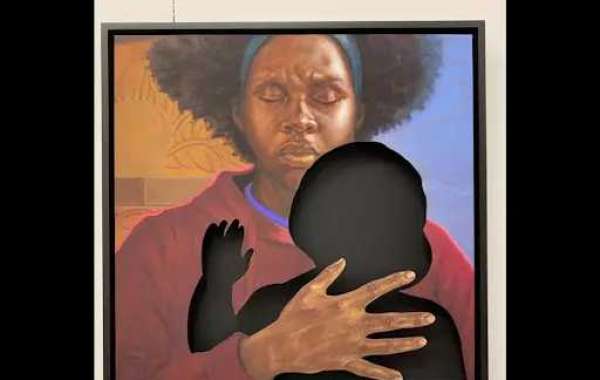
All about black history month and artist Titus Kaphar
Titus Kaphar, a contemporary American artist, is never distant from history when he paints. He does not regard the past as an untouchable or irrelevant part of the present. Instead, Kaphar deconstructs and reconstructs historical narratives to reveal what had been lacking all along. Black subjects and artists have long been marginalized in the white-dominated Western art canon. Kaphar is working to change that. His paintings, sculptures, and installations literally and metaphorically peel back the layers of history to uncover the Black American community's pleasures, victories, tragedies, and wrath.
Artist Titus Kaphar, who was born in Kalamazoo, Michigan, did not really study art until he took a college art course. He went on to Yale University to get his MFA. Art history has always piqued his interest and served as a source of inspiration for him. Even when racial bigotry decided whose works would be remembered and celebrated, Kaphar recognised the fundamental linkages between art's past and present early on. He began a revising process that would last the rest of his life.
To question traditional art history, Kaphar uses a variety of materials. Slashes, whitewash, tar, and many layers adorn his canvases, which are typically sculptural. Some of the messages are more overt than others. Behind the Myth of Benevolence, a painting from 2014, is a good example of this. A painting of President Thomas Jefferson in the style of Rembrandt Peale hangs partially off the frame in the work, revealing a nude portrait of Sally Hemings. Hemings was an enslaved woman who was held by Jefferson and is now recognised as the mother of Jefferson's six children. The portrait of her oppressor physically obscures Hemings' power, beauty, and very image. Titus’s jack and sally paintings are popular among the collectors.
Other pieces by Kaphar are more contemporary in nature. Kaphar is a social activist who is acutely conscious of persistent injustices. In June of 2020, he designed a striking cover for TIME magazine. After the police killing of George Floyd, the Black Lives Matter movement was just getting started again. Kaphar opted to depict the sorrow of Black moms for his TIME cover amid global protests of police brutality and anti-Black violence. Analogous Colors, the original oil painting on the cover, depicts a Black lady clutching her kid against her bosom. The infant has been cut out by Kaphar, leaving nothing but an emptiness.
"I see the black women who are unseen and made impotent in this wrath against their babies in her look," Kaphar wrote about the original TIME cover. "I paint a black mother... eyes closed, furrowed brow, holding the shape of her sorrow while I listlessly wade through another cycle of violence against black people."
In February, Artsy will have a lithograph version of this now-iconic cover available. Analogous Colors is a smaller version of the original Analogous Colors, created using archival inkjet and gouache on aluminium. The mother's agony is on display, as is her child's disappearance. The painting is expected to fetch USD 25,000 at auction.
The art world has taken note of Titus Kaphar's work. Titus auction is popular among the collectors. Kaphar has received a MacArthur Fellowship and is the originator of a New Haven, Connecticut-based arts programme as well as a TED talk. The Studio Museum in Harlem, MoMA PS1, and the National Portrait Gallery in Washington, D.C. have all shown his work. It's also in a lot of private collections all over the world. Kaphar's ascent has been closely followed by the secondary market. Original artwork prices have risen as a result.
Black tar on canvas paintings are among Kaphar's best-selling works. The artist uses tar to totally cover the skin of historical figures, leaving the painted clothing and settings alone. Kaphar's auction record is presently held by an unidentified oil and tar painting from 2015. In June of 2021, it sold for $1,058,500 at Phillips, more than double its high estimate of $400,000. Untitled III makes a direct homage to Marie Guillemine-1800 Benoist's painting Portrait of a Black Woman (Portrait of Madeleine). Kaphar accentuates questions of representation, objectification, and identity by hiding one of the most visible Black portrait subjects in Western art history.
Media Source: AuctionDaily